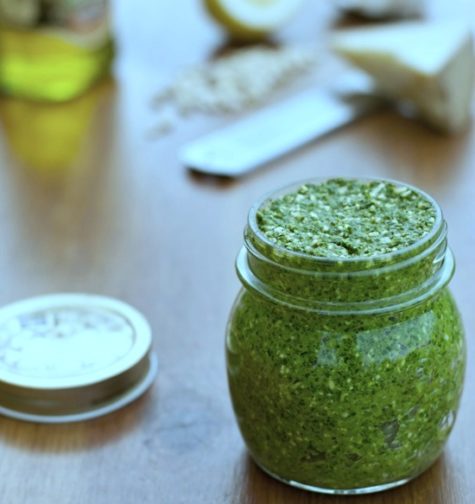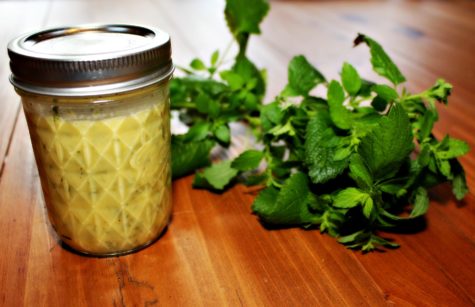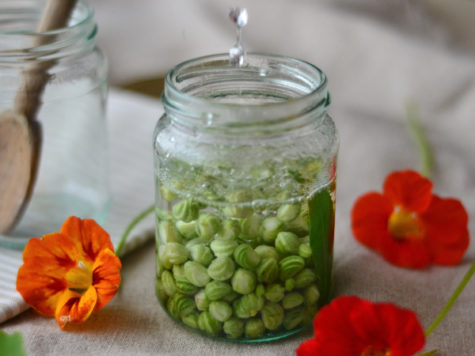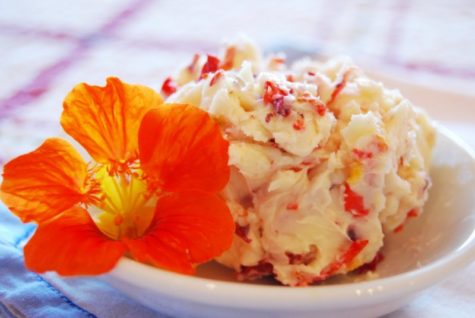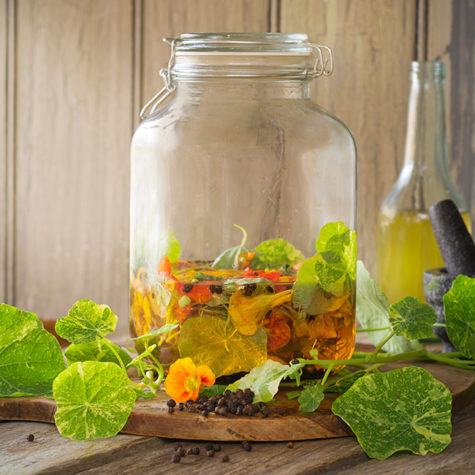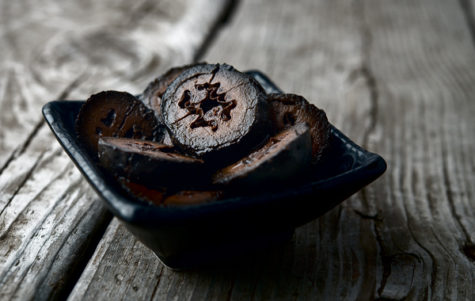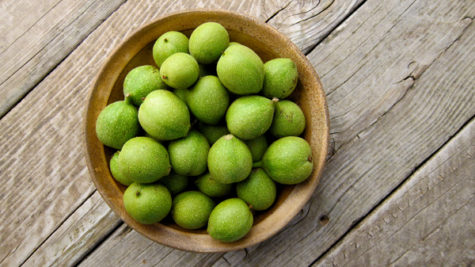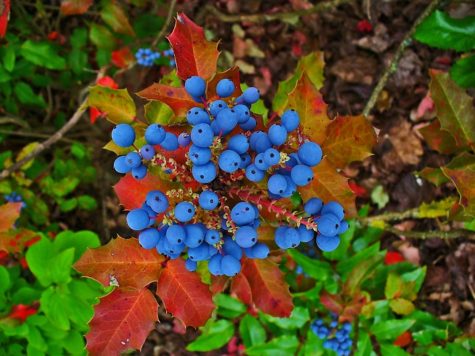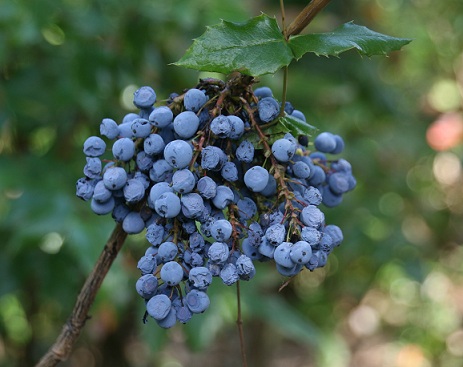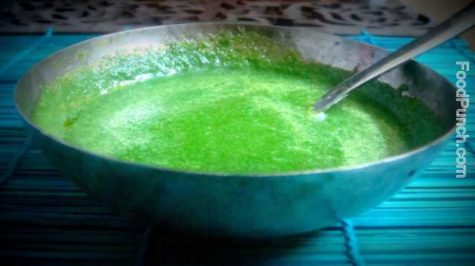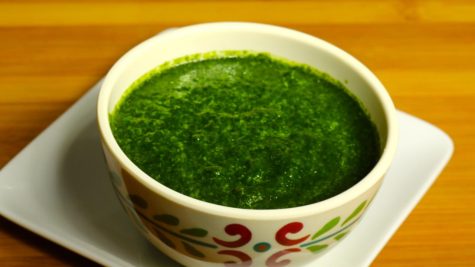Condiments
Lemon Balm Pesto
You will need:
- 2 cups fresh lemon balm
- 1/2 cup extra-virgin olive oil
- 3 or 4 cloves garlic
Blend all ingredients together in a food processor until chunky, but not too well blended. Use to baste broiled or grilled fish or chicken, or serve as traditional pesto over pasta. Makes about 2 cups.
Found at: Bay Witch Musings
Lemon Balm Vinaigrette
Ingredients:
- 3 tbls. lightly flavored olive oil
- 1 tsp. finely shredded fresh lemon balm leaves
- 1/8 tsp. salt
- 1/16 tsp. fresh ground black pepper
- 2 tbls. rice wine vinegar
Combine all ingredients just before using, for the freshest taste and brightest color. Use as a salad dressing with baby lettuces and touch of grated, aged Jack cheese, or toss with fresh steamed veggies (it’s delicious with asparagus!).
Found at: Bay Witch Musings
Pickled Nasturtium Seeds
Use green nasturtium seeds, and in picking retain a short length of stem on each. Lay the seeds in cold salted water for two days (two tablespoons salt to one quart water), then place them in cold water for another day. Drain well and place the seeds in a glass jar, cover with vinegar heated to the boiling point, and close the jar tightly. In a few days the seeds will be ready to use. They are an excellent substitute for capers.
From: Herbal Gardens
Nasturtium Lemon Butter
This lovely butter has a mild lemon/pepper flavor and a colorful appearance. It is wonderful on fish, chicken and vegetables. This is also great on those small party breads, pumpernickel especially.
- 1/2 cup unsalted butter softened
- 1-2 teaspoons grated lemon peel (according to taste)
- 1 tablespoon lemon juice
- 3 tablespoons finely chopped nasturtium blossoms
Mix all of the ingredients well until smooth and well blended. Refrigerate or freeze until ready to serve. Makes 3/4 cup flavored butter.
From: Herbal Gardens
Nasturtium Vinegar
Nasturtiums have a wonderful peppery flavor and add zest to any recipe.
- 1 cup nasturtium leaves, flowers, and buds
- 1 pint champagne or white wine vinegar
Place the ingredients in a clean clear glass jar or bottle. Tightly seal. Let sit for at least 3 weeks before using. Place a new nasturtium in the finished bottle for decoration, but you should make sure the vinegar always covers the flowers or they will mold. Makes 1 pint vinegar to use in salads, sauces and flavoring in other dishes.
From: Herbal Gardens
Pickled Walnuts
What do you do with them? They are particularly good with cheddar, and in Britain they are traditionally part of a ploughman’s lunch, with other pickles, cheese and cold meats. They can also be tossed into beef or lamb stews (pot pies and pasties, too!) in wintertime, and in summertime served in cool salads alongside tomatoes, and accompanying shellfish such as scallops or shrimp.
The flavor is a bit like eating solid steak sauce, with a little floral aroma and a zephyr of bitterness that just barely let you notice it. Eaten alone they are fairly soft, puckery and strangely floral with a Worcestershire-Heinz 57 taste to it.
For the recipe you need green, unripe walnuts to make pickles. And yes, you use the whole thing, hull and all.
It is very important that you test to see that the walnuts are green enough to use. How to do this is slice an unripe nut in half. You need to do this, either with a knife or a stout needle or a long nail, because you have to catch the unripe walnuts before the shell forms. Once that shell forms inside the walnut’s hull, you’re too late.
The traditional harvest date in England is late June.
Any walnuts will work with this recipe, from tiny native Arizona walnuts to big, fat English walnuts, which are the kind you buy in stores. But you do need them hull and all, so this only works if you have a tree nearby.
The process for pickling walnuts is not hard at all, but it takes more than a week. You need to brine the green walnuts for a good long time before they will be ready to pickle properly. The brine time helps with preservation and removes some of the bitterness in the unripe walnuts. Once brine pickled, they are pretty durable. Do you need to sun-blacken the walnuts? No, but doing so gives you a nice, uniform look to them. Otherwise they will be olive green in some places, blotchy black in others.
The pickling liquid in my recipe is very traditional; you’ll see variations on it throughout England. I’ve also made a Chinese-inspired version with Sichuan peppercorns and star anise replacing the allspice.
Makes about: 3 to 4 quarts.
Prep Time: 8 days, fermenting time
Cook Time: n/a
- About 50 to 60 green, unripe walnuts
- 1/2 cup kosher salt
- 1/2 gallon water
- 2 quarts cider or malt vinegar
- 1 tablespoon cracked black pepper
- 1 tablespoon cracked allspice berries
- 10 cloves
- 1 ounce ginger, smashed (about 1 1/2-inch pieces)
- 1 cup brown sugar
Instructions:
- Dissolve the salt in the water to make a brine. Put on some rubber gloves if you have them, because walnut juice will stain your hands for weeks — and it won’t come off. Trust me on this one. Properly gloved, stab each walnut with a fork in several places; this helps the brine penetrate. Submerge the walnuts in the brine and let them ferment for 8 days at room temperature.
- Remove the walnuts and put them on a baking sheet and leave them outside in the sun for a day, until they turn uniformly black. You can do this step without gloves if you want.
- Pack the walnuts into quart jars. Bring the remaining ingredients to a boil and pour over the walnuts. Leave very little headspace in the jars. Seal and keep in a cool place, either the fridge or a basement — you just want them to rest below 70°F — for at least a month before you eat them. Kept this way they will last a year.
Note: When you use the walnuts in recipes or for lunches, be sure to keep the vinegar as it is said to be a great gargle for coughs when you have a cold or the flu.
From: Honest Food
Oregon Grape Lavender Jelly
Our modern palate oscillates between the addictive flavors of salty and sweet, but we have lost an essential ingredient to optimal health: bitter plants. They are so rare in our diet that many people cannot name anything with bitterness except coffee. Historically, humans valued bitters for their digestive stimulating and medicinal properties. Oregon grape is a quintessential bitter plant that has the capacity to cleanse, clarify and enliven body and spirit.
Here’s a simple step by step recipe for Oregon Grape Lavender Jelly (Low sugar):
Measure 8 cups of clean, rinsed Oregon grape berries. Place berries in a cooking pot with 2 cups of water. Bring to a boil, turn down and simmer for 15 minutes. Use a large spoon to mash the berries against the side of the pot so the juice is released.
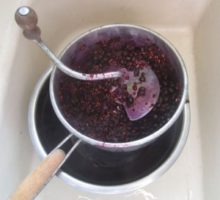 Place a Foley food mill over another cooking pot. In 1 to 2 cup increments, turn the berries and juice through the food mill so that the seeds are separated. Remove the seeds from the mill before straining another batch.
Place a Foley food mill over another cooking pot. In 1 to 2 cup increments, turn the berries and juice through the food mill so that the seeds are separated. Remove the seeds from the mill before straining another batch.
Measure 4 cups of the juice/pulp. Place the juice in a cooking pot. Stir in 2 teaspoon of calcium water (included in Pomona’s Pectin, and 2 tablespoons of fresh or dried lavender.
In a separate bowl, measure 2 cups of honey and stir in 2 teaspoons of pectin.
Bring the juice in the cooking pot to a boil. Add the honey/pectin and stir vigorously for 1-2 minutes until the mixture returns to a boil. Remove from heat.
Place the jelly in clean hot canning jars, wipe the top of the jars to remove any spillage, cover with lids, and can in a water bath for 10 minutes. If any lids do not seal, refrigerate the jar of jelly and use within three weeks.
Oregon Grape Jam
Oregon grape was often used by several native North American Indian tribes. The blue fruits are tart and improve after frost. They are often gathered for jelly or wine. Used to treat a wide variety of ailments, Oregon Grape species contain the extremely potent alkaloid, berberine, (also found in goldenseal) which is antiseptic and stimulates the liver and spleen.
Ingredients:
- 1 quart Oregon Grapes (Mahonia aquifolia or other Mahonias)
- 3 apples, peeled, cored and cut into small pieces
- 1 box fruit pectin
- 7 1/2 cups sugar
- 1 – 12 oz can frozen concord grape juice concentrate
- Enough water ready to add to grape, apple pulps and juice concentrate to make the measurement of 6 cups.
- 8 – 8oz jars, lids and rims
Take out about 1/4 cup grapes and a heaping tablespoon of small apple pieces and set aside. Then follow the cooking steps for grape jam inside the pectin package adding the set-aside fruits to the jars just before sealing. If you don’t have enough wild Oregon Grapes at one time, you can freeze them until you have enough.
This recipe is from a woman in Coquille, Oregon, which is along the southern Oregon Coast. Her name is Rachel Ordway Smith. She has other recipes using fruits from northwest native plants on her web site at Arts Desire
Green Coriander Chutney
Ingredients:
- 200 gms fresh Green Coriander
- 5 Garlic cloves
- 2 tablespoon Lemon Juice
- 2-3 Green Chilies
- Salt to taste
- A drop of Mustard/Olive oil to dress up.
- Optional – 2 tablespoon of grated unripe mango or a small tomato to add the tang..
Add all ingredients except Lemon juice in a Mixer Grinder. Make a thick past adding water just enough to make the paste. Pour this chutney in a glass bowl and add the lemon juice and a drop of Mustard or olive oil, mix well and serve with Pudina Parantha (Mint Flavored Indian Bread) and Chicken Korma(Chicken in thick Indian Style Gravy).
Dos and Don’ts:
DOS:
You may add a dash of ginger if you like,
Some people also like to add Aamchur powder for the tang..
DON’TS:
Be cautious while adding chilies, quantity must be adjusted to your taste and depending on how hot the chilies are.
Add water just a little at a time, too much of it in one go might spoil the consistency of the paste.
From: Foodpunch.com
Mint Chutney
Mint chutney is a delicious condiment, blend of mint and cilantro combined with spices. Most Indian snacks are incomplete without chutney. Chutney also tastes great with a main meal. Try using mint chutney as a spread for your sandwiches – it tastes great!
Recipe will serve 6.
Preparation time 15 minutes
Cooking time 10 minutes
Ingredients:
- 1 cup packed mint (podina) leaves all the stems removed
- 1 cup packed Cilantro (hara dhania) roughly chopped
- 2 tablespoons green chilies chopped (adjust to taste)
- 2 tablespoons lemon juice (adjust to taste)
- 1/2 inch ginger chopped
- 1 teaspoons salt (adjust to taste)
- 2 tablespoons sugar
- Pinch of asafetida (hing)
- Approx. 3 tablespoons water use as needed
Instructions:
Blend all ingredients, except the mint and cilantro, into a paste. Add mint and cilantro, a little at a time, and blend until smooth. Add water as needed. Taste and adjust salt, green chilies, or lemon juice as desired. Tastes great with samosa, vegetable pakoras….
Suggestions:
You can make mint chutney in large quantity in advance and freeze it in ice cube trays. Store the frozen cubes in a zip-lock plastic bag. When ready to serve, defrost as many cubes of mint chutney as needed.
Note:
The most common mint used in Indian cooking is Podina or Peppermint. However, any variety of mint can be used. Just be aware that the flavor will not be quite the same.
From: Manjulas Kitchen
